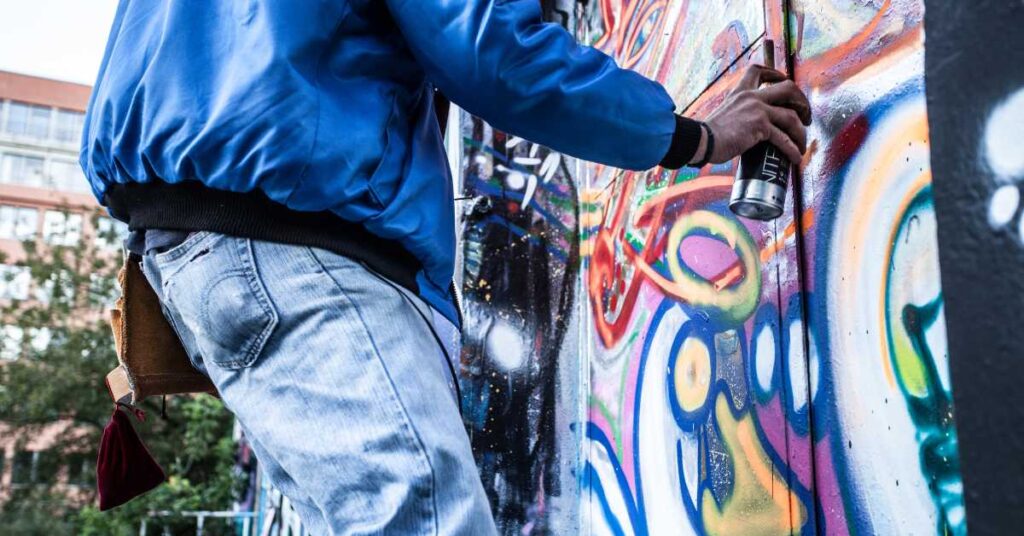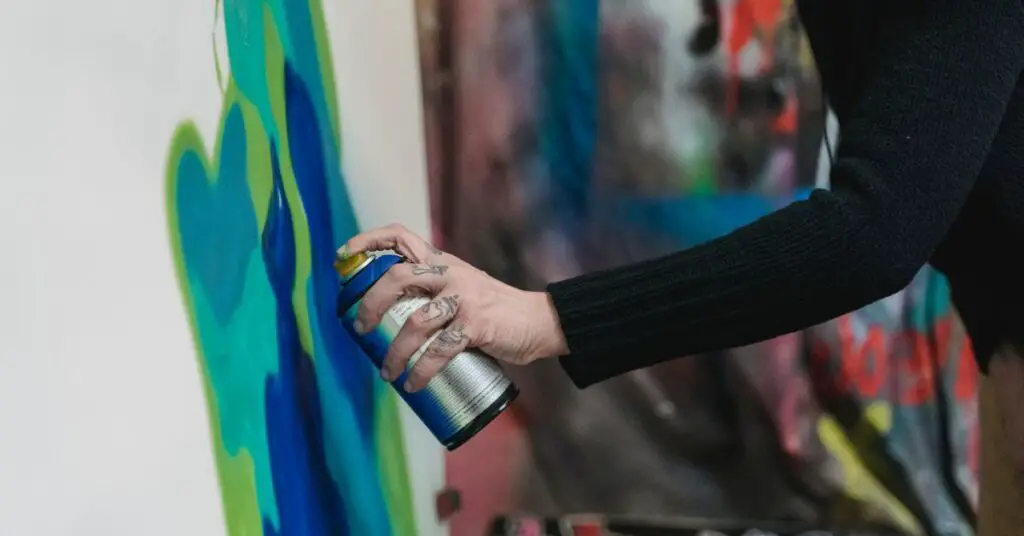Will spray paint dry in 40 degree weather? Yes, spray paint will dry in 40 degree weather but it might take longer to dry completely so it is best to pick your project, the day when you will do it and the paint so that you will get the best results. It is also a good idea that you put your painted item into direct sunlight to dry as the sun will help it dry quicker even in colder weather.
Spray painting is a popular way to give a new look to various objects. However, it can be challenging to determine whether spray paint will dry in cold weather. If you are planning to paint in 40-degree weather, it is important to know the specific precautions you should take to ensure your paint dries properly.
Understanding spray paint is crucial to determine how it reacts to different temperatures. Spray paint can dry at different rates, depending on the type of paint, the thickness of the layers, and the temperature. While some spray paints can dry in as little as 10 minutes, others may take up to 24 hours to dry completely. The drying time can be affected by various factors, such as humidity, airflow, and temperature.
Key Takeaways
- Spray paint can dry at different rates depending on the type of paint, the thickness of the layers, and the temperature.
- Cold weather can significantly impact spray paint drying time, and it is important to take precautions when painting in 40-degree weather.
- To ensure your spray paint dries properly in cold weather, you should choose the right type of paint, prepare the surface properly, and apply the paint in thin layers.

Understanding Spray Paint
Components of Spray Paint
Spray paint is a type of paint that comes in a pressurized canister and is sprayed onto a surface through a nozzle. It consists of four main components:
- Pigments: These are the colored particles that give the paint its color.
- Solvents: These are the liquids that dissolve the pigments and make them easier to spray.
- Binders: These are the substances that hold the pigments together and help them adhere to the surface.
- Propellants: These are the gases that create pressure in the canister and force the paint out of the nozzle.
Different types of spray paint can have different ratios of these components, which can affect their drying time, durability, and finish.
How Spray Paint Works
When you press the nozzle of a spray paint can, the propellant creates pressure that forces the paint out of the canister and onto the surface. As the paint particles hit the surface, they spread out and form a thin, even layer.
The solvents in the paint begin to evaporate immediately, which helps the paint dry quickly. The binders then begin to harden and create a strong, durable coating that adheres to the surface.
However, the drying time of spray paint can be affected by several factors, including the temperature and humidity of the environment, the type of surface being painted, and the thickness of the paint layer.
In colder temperatures, the solvents in the paint may not evaporate as quickly, which can slow down the drying process and make it more difficult for the paint to adhere to the surface. It is important to keep these factors in mind when using spray paint, especially in colder weather.

Will spray paint dry in 40 degree weather?
When it comes to spray painting in cold weather, it’s important to understand how weather conditions can affect the drying time of spray paint. In this section, we will discuss the role of temperature and the effect of humidity on spray paint drying.
Role of Temperature
Temperature plays a significant role in the drying time of spray paint. In general, spray paint will dry faster in warmer temperatures and slower in colder temperatures. The ideal temperature range for spray paint application is between 50°F and 90°F.
If the temperature falls below 50°F, the paint will take longer to dry and may not cure properly. If the temperature is above 90°F, the paint may dry too quickly, which can cause cracking and peeling.
If you are planning to spray paint in 40 degree weather, you can still do it, but you should be aware that the drying time will be longer. You may need to wait for several hours, or even overnight, for the paint to dry. To speed up the drying process, you can use a fast-drying spray paint or apply a thin coat of paint.
Effect of Humidity
Humidity is another factor that can affect the drying time of spray paint. High humidity levels can slow down the drying process, while low humidity levels can speed it up. In general, it’s best to avoid painting in high humidity conditions, as this can cause the paint to dry too slowly and may lead to issues such as bubbling and cracking.
If you must spray paint in high humidity conditions, you can use a dehumidifier or air conditioner to reduce the humidity levels in the room. You can also use a fan to increase air circulation, which can help the paint dry more quickly.
In conclusion, when spray painting in cold weather, it’s important to consider the impact of temperature and humidity on the drying time of spray paint. By understanding these factors and taking the necessary precautions, you can ensure that your spray paint job dries properly and looks great.
Specifics of 40 Degree Weather
Temperature and Drying Time
When it comes to spray painting in 40 degree weather, the temperature plays a crucial role in the drying time of the paint. In general, paint needs an environment of at least 50 degrees Fahrenheit to dry properly. If the temperature drops below 40 degrees, oil-based paints can get thick and cause bubbles or bumps when applied.
If you’re planning to spray paint in 40 degree weather, it’s important to keep in mind that the drying time of the paint may be significantly longer than in warmer temperatures. Thin coats of spray paint on metal can be dry to the touch after only 10 minutes in warmer temperatures, but it can take up to 24 hours or more for the paint to dry in 40 degree weather.
Humidity Factors
In addition to temperature, humidity can also affect the drying time of spray paint in 40 degree weather. When the relative humidity is too high, the paint may not dry as quickly as it should. The ideal spray painting temperature is between 50°F and 90°F when the relative humidity is less than 85%.
If you’re planning to spray paint in 40 degree weather, it’s important to take additional painting precautions such as avoiding direct sunlight exposure and high humidity. Also, it’s important to remember that the drying time of the paint may be longer than expected, so be sure to give the paint enough time to dry completely before handling or moving the painted object.
Overall, while it is possible to spray paint in 40 degree weather, it’s important to keep in mind the specific temperature and humidity factors that can affect the drying time and overall quality of the paint job.

Frequently Asked Questions
What temperature is too cold for spray paint to dry?
Spray paint will not dry properly if the temperature is below 50 degrees Fahrenheit. If the temperature is too cold, the paint will take much longer to dry and may not adhere to the surface properly.
How long does spray paint take to dry in cold weather?
When spray painting in cold weather, the drying time will be longer than in warmer weather. It can take up to 24 hours for spray paint to dry in temperatures below 50 degrees Fahrenheit.
What happens if you spray paint below 50 degrees?
Spray painting below 50 degrees Fahrenheit can cause the paint to become thick and may not adhere to the surface properly. The paint may also crack or peel after it dries.
What is the minimum temperature for spray painting?
The minimum temperature for spray painting is 50 degrees Fahrenheit. It is important to check the temperature of both the air and the surface you are painting before beginning any spray painting project.
What is the best temperature to spray paint metal?
The ideal temperature range for spray painting metal is between 60 and 75 degrees Fahrenheit. This temperature range will allow the paint to dry quickly and adhere to the metal surface properly.
What is the temperature range for Rust-Oleum spray paint?
Rust-Oleum spray paint can be used in temperatures between 50 and 90 degrees Fahrenheit. However, the ideal temperature range for Rust-Oleum spray paint is between 70 and 80 degrees Fahrenheit.
Conclusion
In conclusion, spray painting in 40-degree weather can be challenging. While some paints can be applied at temperatures as low as 40 degrees Fahrenheit, it is generally best to paint when the temperature is above 50 degrees Fahrenheit.
Spray painting in cold weather can result in a longer drying time, which can lead to an uneven application and poor adhesion. It is also important to note that some paints may not dry at all in cold weather.
To ensure the best results, it is recommended that you wait for warmer weather before spray painting. If you must paint in cold weather, be sure to take extra precautions, such as warming the surface you are painting and using a paint that is specifically designed for cold weather application.
Overall, it is best to follow the manufacturer’s recommendations for temperature and humidity when spray painting. By doing so, you can ensure that your paint job will look great and last for years to come.

